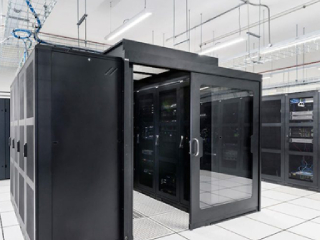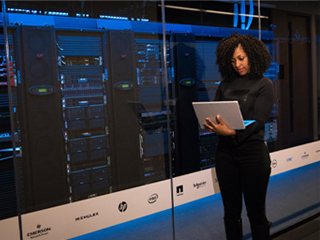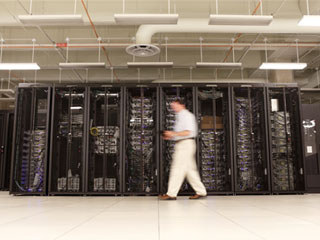Evident improvements can be seen with water cooling technologies. As such, data centers rely on water to cool and sustain operations. Removing heat from IT facilities is a priority. Water is a primary medium that facilitates the cooling exchange in a data facility.
Water management in a data center is a vital variable to ensure operational uptime. With multiple layers of equipment that are sensitive to heat, optimum cooling is necessary. Quality of water compliant to standards are factors that need utmost consideration. Any presence of organic matters and natural sediments in the water used for cooling will affect cooling efficiency. This can, ultimately, give rise to equipment damage and downtime.
Why Is Water A Vital Resource?

Many water sources come from municipal groundwater traditionally. However, the source is a common good that impacts all the other stakeholders benefiting from water. Being party to water extract can be a cause of scarcity and affects community lives. But water supply plays a significant factor in sustaining a data center. The criticality of obtaining water and the means of efficient use highlights the vital need for the resource.
The evolution of data centers has steadily increased in recent years. New hyper-scale data centers are sprouting at a faster rate. The increased number requires further cooling requirements. With more extensive cooling needs, the water supply needs enormous volume. Ultimately, this adds stress to the already depleting local water resources.
The Challenge For Data Centers
Because of constant expansion, new data centers are met with cooling inadequacy. The facilities are left to make do with the current water supply. The combined demand of many data centers cannot be addressed by lone local resources alone.
For many data centers, the future water-cooling integration looks into the water source at the helm. The current challenge is to provide a dedicated water utility supply to data centers. It is to veer away from extracting water that is mainly for public use.
Building new water plants can address this challenge. A wastewater treatment plant is also a sustainable solution to make certain water use is maximized. Other data centers with existing facilities can expand to cater to more considerable supply volume. But building water plants from the ground up would take a longer time. A more extended construction period will hamper the operational run of any existing data center.
Overcoming this issue will need an external solution. These can be external capacities that can be outsourced for the time being. These water supplies can bridge the lack of water while the construction is ongoing. Cooling systems can still run from these supply solutions. Some of these are:
- Mobile Water Treatment Trailers
- Containerized Systems
- Fixed Capital Equipment
The likes of a mobile water treatment trailer can cover the water supply for a definite period. As such, the facility can take the helm while the permanent water plant is made. However, despite the adaptability of these makeup water cooling technologies, long-term water should always take precedent. The accurate mapping of water needs in the initial planning stages will help avoid water supply loss in the process.
Planning For Long-Term Water Technologies
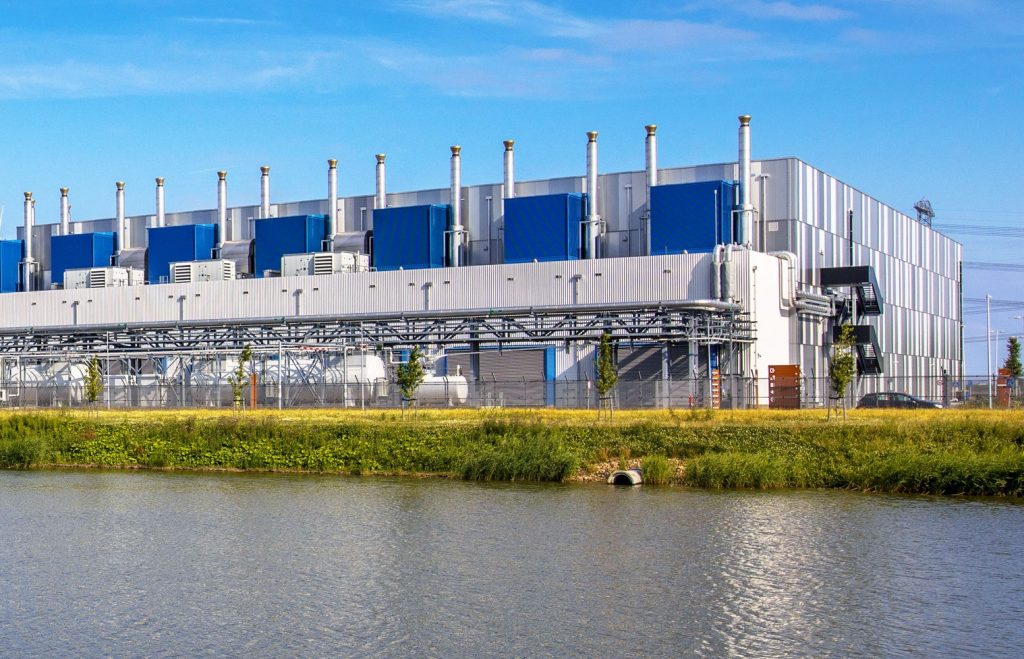
Photo Credit: media.wired.com
Datacenter development needs long-term water cooling technology. Different water cooling technologies are designed for a particular purpose. The most exact need, however, is necessary as a cooling solution. Because of its crucial role, water cooling technologies should stand the test of time and environmental weathering. Planning to build or upgrade water plants should go through a thorough process to ensure long-running conditions. The planning stages should also consider the facility’s flexibility to adapt to the increasing data center cooling demands.
-
Initial Water Quality Evaluation
At the outset of any water plant project, water quality should be a prerequisite. Sources of water need proper evaluation and characterization. More often, analysis is only done for water sources that are accessible. Analyzing groundwater requires a comprehensive check for alternate water sources within the site.
The additional water source can serve as an alternate source. It can also contrast water quality from other sources. Selecting the best one would be easier with many options to look into. Water composition is integral in water quality evaluation. The different water sources will elicit different chemical and mineral makeup. A specific focus on these water attributes will negate extra costs in the long run.
-
All Options Accounted
The water source should not only depend on its natural composition to proclaim that it’s the best. For many water plants, different project requirements come into play.
- Reduced Capital Costs
- Reliability
- Efficient Operation Costs
These variables are considered because water quality is not all about potability. The bigger problem comes when water quality has different natural makeup in terms of hardness or mineral presence, which will increase cooling efficiency. The occurrence of these elements will prove to be detrimental to the water treatment process as a whole.
-
Advice Of Specialized Experts
The value of water resources will play a big part in a data center’s efficiency. It can affect power usage effectiveness (PUE) and water usage effectiveness (WUE). Manning water operations will need technical know-how to operate it properly.
Specialized experts have valuable experience to uphold data center efficiency. Some data centers will decide to outsource experts on the water landscape. These experts are consultants to determine and address water concerns. These pieces of advice are significant inputs that will preserve water quality.
Optimizing Operational Capacity
Water Reuse
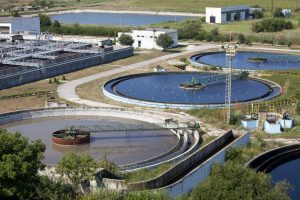
Photo Credit: genesiswatertech.com
Water use is a continuous activity in a cooling process. Because it requires significant volumes, reusing water is more logical. This ensures that water source depletion will not arise. Reusing water requires specialized technologies to do so. A wastewater treatment facility has technological solutions that can effectively reinvigorate water quality. Other strategies include limiting biological growth in water. This requires thorough chemical analysis more than just basic water sampling. These methods are ways to extend the useful life of water.
Shift To An Evaporative Cooling System
Most data centers on the trade-off of water utilization and energy usage are now aiming to reduce energy consumption. They look into reducing power utilization where evaporative cooling systems through water use are effective. The downside, however, is increased water supply.
Lesser Dependency On Local Resource
With competing issues concerning water use with the rest of the community, water reuse technologies negate such disputes. Replacing potable water with treated wastewater reduces the dependency of local data centers on municipal water sources. Hence, the community will have a more significant stake in the resource. On the other hand, the data centers will have lesser water needs and can only avail of the local resource when necessary.
Better Water Facility Monitoring
Water cooling technology is responsible for efficient cooling yields in a data center. As such, water plants are vital facility integration. With an upgrade in the water supply facility, monitoring solutions should also keep pace to ensure optimized sustainability of the whole data center.
Monitoring Water Treatment Facility
A water treatment facility must run 24/7, all days of the year. It is often more extensive and far-reaching than a pumping station; remote monitoring should be adequate. AKCPro server as a control panel connected to the site can check the engine parameters remotely. These parameters include:

AKCP Wireless Valve Motor Control
- Oil Pressure
- Battery Voltage
- Engine Temperature
- Fuel Level
- Engine Speed
This server provides custom dashboards to display data on generators and sensors installed throughout the water cooling technologies.
AKCP sensors can monitor backup power systems enabling a steady flow of supply to the facility.
- ACKP Wireless Water Distribution Control
- Wireless Tank Level Sensor
Monitor tanks of depths up to 20 meters. Often tanks are located in outdoor or difficult to cable areas. The WT-TDPS is battery powered or can be powered from a 5V DC or 12VDC source. Track fuel usage, graph the tank level, receive alerts when tank levels are critical. No more constraints on maximum cable lengths from the base unit
These smart monitoring technologies help maintain the proper operation runtime of the pumping station.
Vitality Of Water Cooling Technologies In The Future
Water footprint will be embedded in the evolution of data centers. The developments in IoT and artificial intelligence will prime edge computing resources. With this progress, cooling systems need a booster to address heat removal demands. As a significant rise is seen in data centers, valuable progression will also be expected in water cooling technologies.
Reference Links:
https://www.earthwiseenvironmental.com/industries/data-centers
https://www.datacenterdynamics.com/en/opinions/building-or-expanding-a-data-center-think-water-and-plan-ahead/
https://www.datacenterdynamics.com/en/opinions/data-centers-will-need-have-water-expertise/


